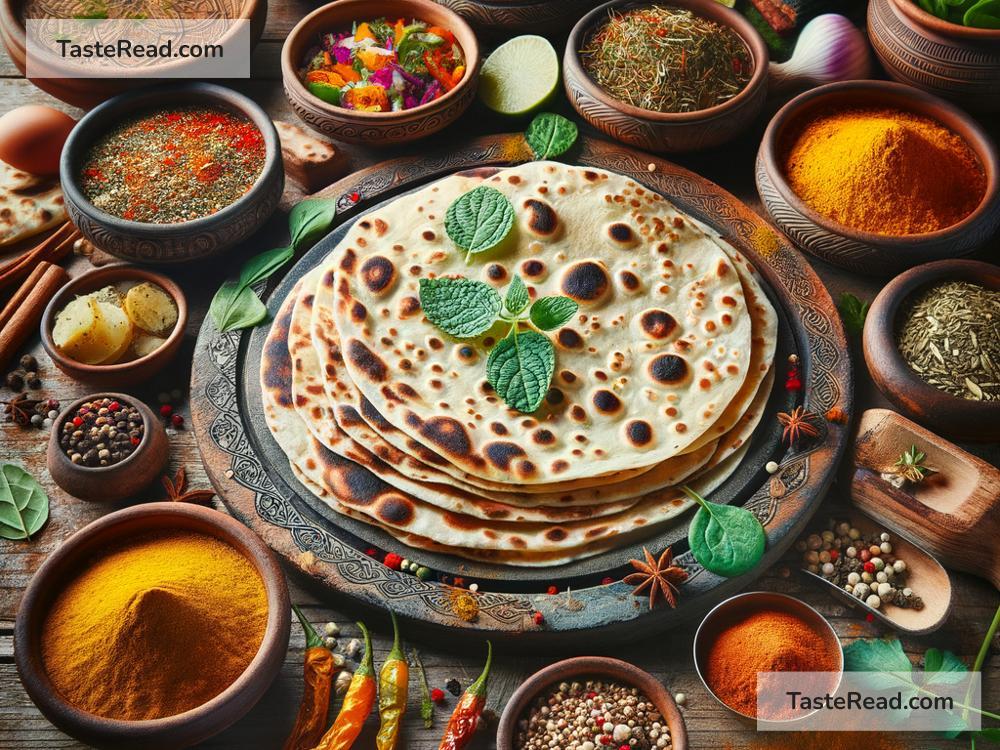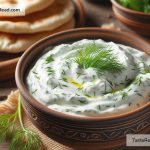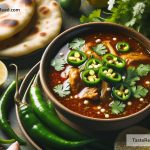Exploring the Variety of Indian Flatbreads: From Naan to Paratha
Indian cuisine is a treasure trove of flavors, colors, and textures that never fail to impress. Among the myriad of dishes it has to offer, Indian flatbreads hold a special place. These breads are not just a side dish; they’re an integral part of the meal, perfectly complementing the spicy gravies and dry dishes. From the well-loved Naan to the wholesome Paratha, let’s dive into the world of Indian flatbreads and discover the variety that this rich cuisine has to offer.
Naan – The Global Favorite
When you think of Indian flatbreads, Naan is probably the first thing that comes to mind. It’s a soft, pillowy bread traditionally baked in a tandoor (clay oven). The dough is made from maida (refined flour), yeast (for leavening), yoghurt, milk, and a little bit of sugar and salt. The result is a flatbread with a beautiful golden-brown surface and a soft, chewy texture. Naan can be enjoyed plain or brushed with ghee (clarified butter) or butter. There are also variations such as garlic naan, cheese naan, and kulcha naan filled with vegetables or minced meat, offering a delightful burst of flavors.
Roti – The Staple Bread
Roti, also known as chapati, is the most common type of flatbread in Indian households. Made from whole wheat flour, water, and a pinch of salt, this bread is healthy, vegan, and incredibly versatile. Rotis are cooked on a tawa (flat skillet) without any oil, making them a lighter option. Soft, light, and slightly chewy, they form a staple part of the everyday meal across India, perfectly scooping up curries or being used to wrap around pieces of grilled meat.
Paratha – The Flaky Delight
Paratha is a layered or stuffed flatbread that’s a step up from the basic roti. The dough is usually made from whole wheat flour and is either layered with ghee or stuffed with a variety of fillings such as spiced potatoes, paneer (cottage cheese), cauliflower, or even leftovers from the previous meal. Parathas are then shallow-fried on a tawa, resulting in a flaky, crispy, and utterly delicious bread that can be enjoyed any time of the day. Aloo Paratha, stuffed with spiced potato filling, served with a dollop of butter or yogurt and pickle, is a popular breakfast dish in many parts of India.
Puri – The Puffed Wonder
Puri is a deep-fried bread made from unleavened wheat flour dough. The magic of Puri lies in its cooking technique. When dropped into hot oil, it puffs up into a light, airy bread that’s golden and crispy on the outside and soft inside. Puris are often served with savory potato curry, but they’re also paired with sweet dishes like halwa during festivals and special occasions. Despite being fried, Puris are surprisingly light and not greasy, making them a festive treat.
Dosa – The Crispy Crepe
Venturing into South Indian cuisine, Dosa is a type of flatbread that’s more like a crepe. Made from a fermented batter of rice and black lentils, Dosas are thin, crispy, and have a slightly tangy flavor owing to fermentation. They’re cooked on a hot griddle with a dab of oil until golden brown. Dosas are served with a variety of chutneys and sambar (a lentil-based vegetable stew). From the classic plain Dosa to the Masala Dosa, stuffed with a spiced potato mixture, there’s a wide variety to choose from.
Concluding Thoughts
Indian flatbreads are a testament to the diversity and richness of Indian cuisine. Each type of bread has its own unique texture, taste, and cooking method, showcasing the vast culinary skills across the different regions of India. Whether it’s the soft and chewy Naan, the versatile Roti, the flaky Paratha, the puffed Puri, or the crispy Dosa, each flatbread offers a unique experience that complements the Indian meal in its own special way. Exploring the variety of Indian flatbreads is not just about tasting the different flavors, but also about delving into the rich cultural heritage of India. So next time you’re indulging in Indian cuisine, take a moment to appreciate the humble breads on your plate, for they are the unsung heroes that complete the meal.


